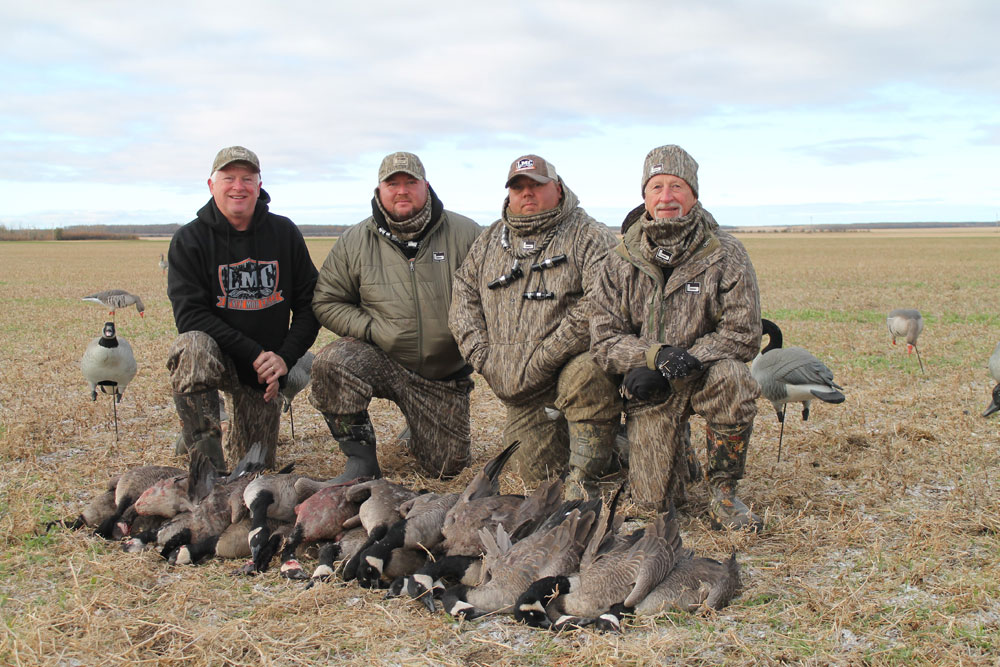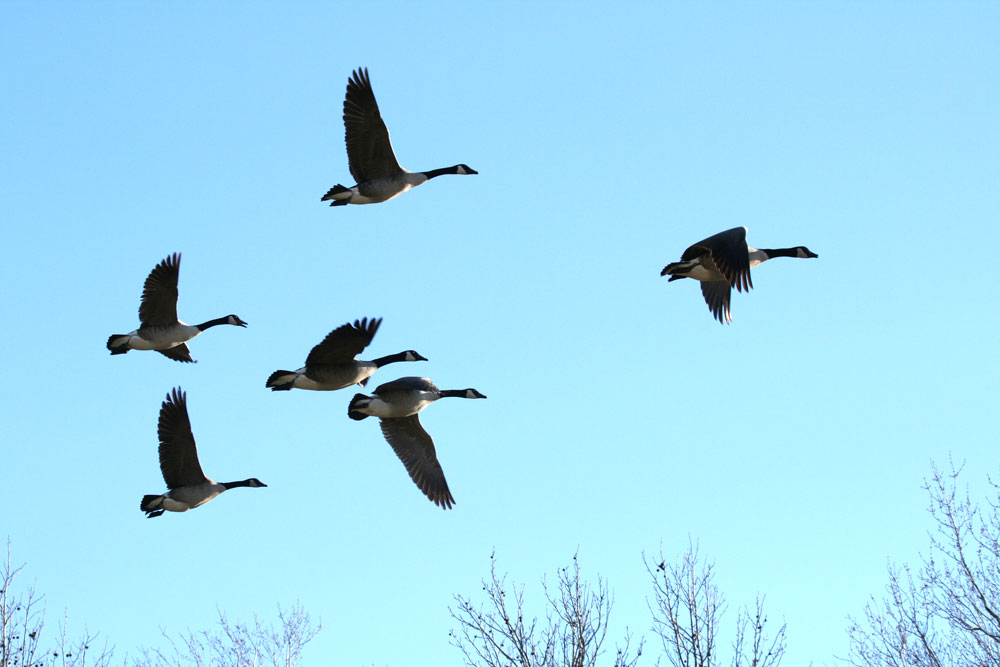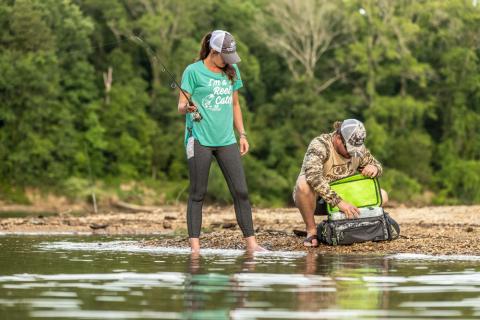provided by John E. Phillips
Richie McKnight, from Dawson Springs, Kentucky, is a travelling duck hunter and has been a Mossy Oak Pro since 2005. You can see his adventures on Traffic Hunters TV on YouTube and go to his Facebook page. “I got really interested in duck hunting when I was fairly young,” McKnight explains. “And, duck hunting just stuck with me like white on rice. I don’t think we killed any ducks when I was young, however, the experience of watching older hunters call and pull the ducks out of the sky totally fascinated me. So, I’ve been duck hunting ever since.”

I like to hunt resident geese around Kentucky because the season comes in early, and the bag limits are somewhat liberal. We have quite a few resident geese here in Kentucky, as do many other southern states. The season usually opens in September. The resident geese like to get up early go to wherever they want to be and stay where they want to be all day long. I may take one to two dozen decoys with me and usually will be hunting in short sleeves and shorts. I call this gentleman hunting. I think we can harvest three Canadas per hunter.
Resident goose hunting is a hit-or-miss proposition. You may go one morning, and five people will take their limits. You may go the next morning, and nobody will get a limit. Those geese don’t really like to fly in 90-degree weather, and rarely, if ever do we have a cold front in September in Kentucky. Numerous places in northern Illinois and Wisconsin offer resident goose hunting where they have a molting geese migration. If the North gets a cold front in September or October, those young geese that have just molted and gotten their winter feathers will start coming south. Then those resident goose hunters in the northwest can have some great hunting.
Northern Illinois offers some of the best resident goose hunting I’ve ever had. But, in southern states like Tennessee, Kentucky, Indiana and north Alabama, you have very limited opportunities to take a limit of resident goose. Now the whole of Kentucky has an awful lot of resident geese. However, they are spread out all over the state, so in our area we may only have 100 resident Canada geese to hunt.
As a whole, finding a place to hunt is not usually very hard, unless a landowner’s children decide to become goose hunters during the resident season. When I first started hunting ducks and geese about 20 years ago in Kentucky, I was about the only waterfowl hunter in my town. But, today here in Kentucky, you’re not considered cool, unless you waterfowl hunt.

Thanksgiving is our opening day of duck season in Kentucky. A gas station near where I hunt opens early. I’ll stop there and get a cup of coffee and a snack when I’m driving to my duck hole. I’m 46 years old now. Back when I was 18 or 19 years old, I could pull into that gas station and I’d be the only person in there wearing camouflage and having duck calls around my neck. And people would look at me like I had two heads. This past Thanksgiving, I pulled into my gas station, and there were 15 boats with duck blinds, trailers, dogs and decoys - all of them trying to get a cup of coffee at my gas station.
Now if you want to start an argument, start talking about why your duck call is better than someone else’s duck call. Every duck caller believes that without question he’s got the best duck call money can buy. I use a Tim Grounds call.
I’m often asked why I named my show “Traffic Hunters.” Running traffic is a term that more and more waterfowlers are using to explain how they hunt. In the past, everyone wanted to hunt on the X. The X represented the spot where the ducks were sitting, feeding the night before.
A traffic hunter is a waterfowler who doesn’t hunt the X. Maybe the landowners don’t want you to hunt on their X or the X may be a waterfowl refuge. So, if we’re going to take ducks, we have to hunt the perimeter around the X. When the ducks leave the X, they don’t really want to be where you are, but you’re trying to force them to come down and get in your decoys. The ducks have got a place in their minds where they want to be, and it may not be where you want to set up your decoys and your blind. So, you really have to work hard to convince those ducks to come down within shooting range. There are so many waterfowl refuges, both state and federal, throughout the nation that running traffic is becoming more and more popular, with duck and goose hunters today than it ever has been in the past.






























